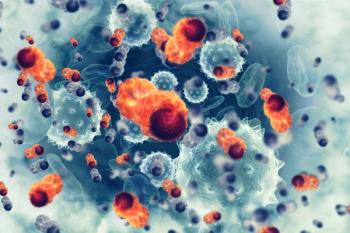
- ONCOLOGY Vol 9 No 8
- Volume 9
- Issue 8
Differences in Structural Proteins in Prostate Cells May GiveEarly Indications of Cancer
Variations in structural proteins found in the nucleus of prostatecells may indicate whether a cell will become cancerous, according
Variations in structural proteins found in the nucleus of prostatecells may indicate whether a cell will become cancerous, accordingto a Pittsburgh Cancer Institute (PCI) investigator.
Robert Getzenberg, PhD, Assistant Professor of Pathology, Surgery,Medicine and Pharmacology at PCI, presented his findings at theannual meeting of the American Urological Association in Las Vegas.Dr. Getzenberg's research focuses on nuclear alterations thatare prevalent in prostate cancer cells and are commonly used asa pathological marker for cancer.
Researchers looked at structural proteins within the cell's nucleus.These proteins form the "scaffolding framework" of thenucleus, and are involved in DNA organization. "When we startedlooking at the nuclear matrix proteins in the cells of prostatetissue, we found that there is a difference between normal andcancer cells," Dr. Getzenberg said.
Variations in nuclear matrix proteins may be a useful tool fordiagnosing early stages of prostate cancer, and may offer newstrategies for treatment, according to the investigators.
Dr. Getzenberg and his colleagues identified proteins that werepresent only in the normal prostate and were missing in both prostatecancer and benign prostatic hyperplasia (BPH); proteins foundonly in the prostate cancer cells and missing in the normal prostateand BPH; and proteins that appeared in both normal and BPH samplesbut were absent from prostate cancers.
"Differences in nuclear matrix proteins may be a fundamentalcause of, or a major contributor to, the pattern of altered geneexpression identified in prostate cancer," Dr. Getzenbergsaid.
Articles in this issue
over 30 years ago
Sociobiology and Cervical Cancerover 30 years ago
Cigarette Smoking Among Adults--United States, 1993over 30 years ago
New Lymphatic Mapping May Avoid Many Axillary DissectionsNewsletter
Stay up to date on recent advances in the multidisciplinary approach to cancer.
















































































